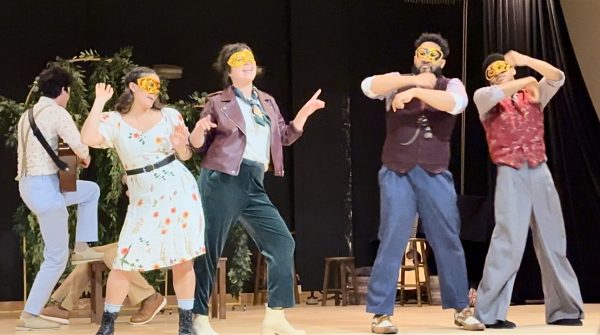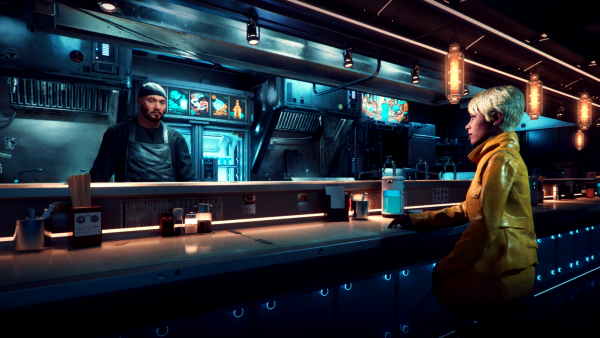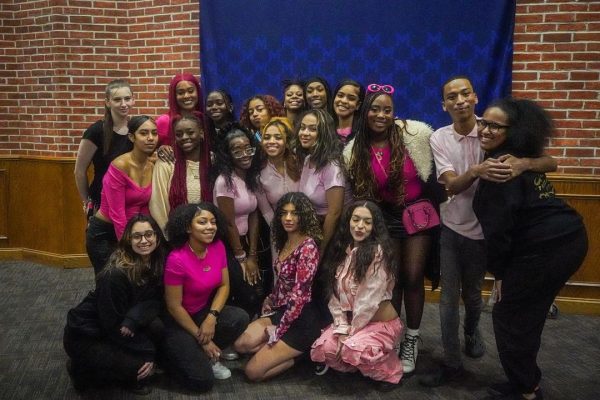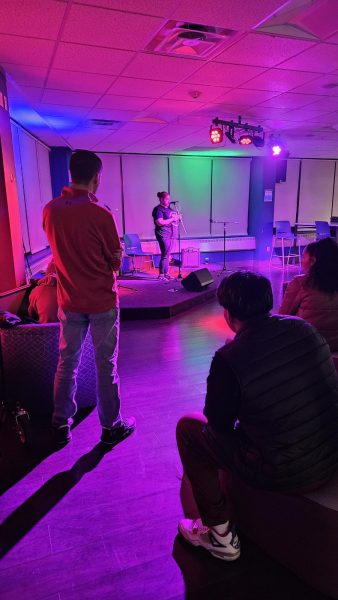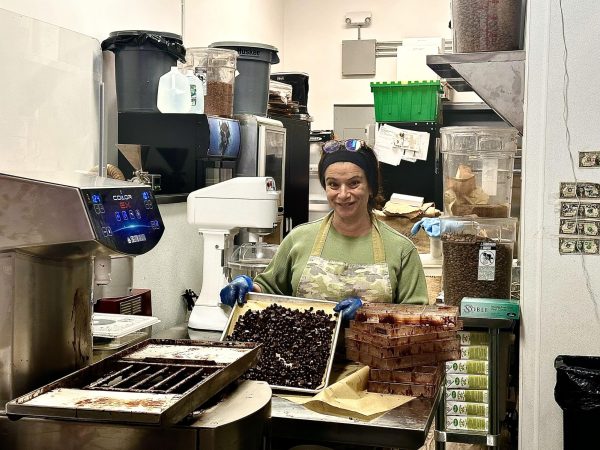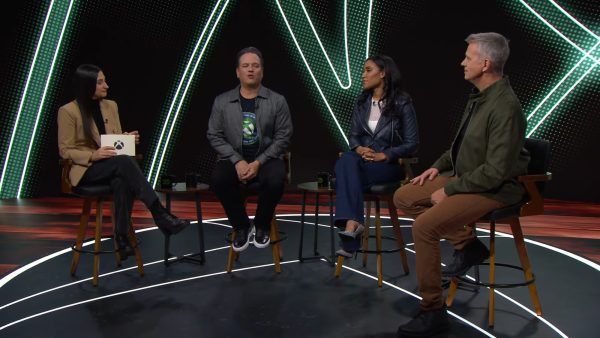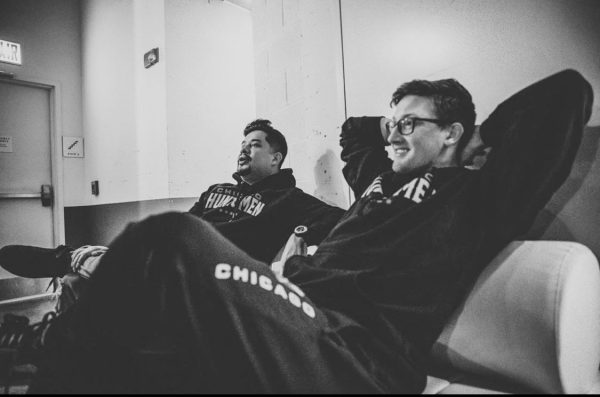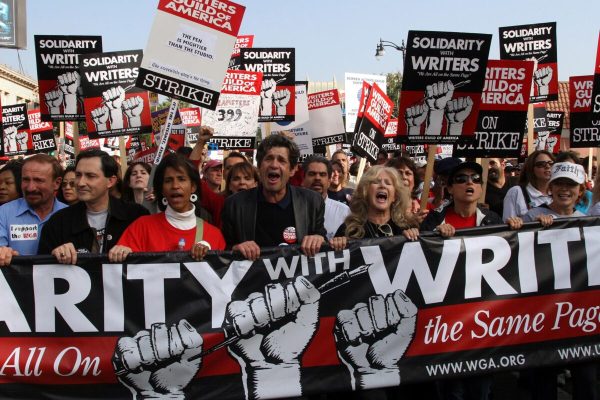Defining Moments: The 19th Mercy College International Film Festival
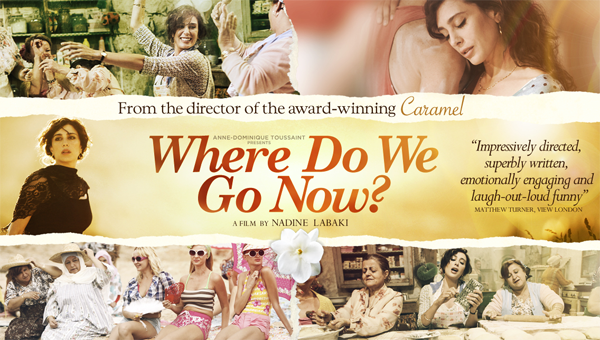
The stars were aligned, the stage was set, the bright lights had begun to shine down upon Mercy College for its 19th annual International Film Festival.
The committee of Mercy faculty is chaired by Dr. Elise Arnold-Levine and consists of Dr. Alan Hartman, Prof. Louis Grasso, Prof. Paul Trent, Dr. Celia Reissig-Vasile, Prof. Mark Palmieri and Dr. Dana Horton.
The event, always held during the first or second week of April, showcases a selection of films for both residents and students. Each year, a specific theme is chosen as an overall bridge between the films selected. For its 2018 installment, Time and Defining Moments were the main themes of the four films selected.
“This was its 19th year, it started in 1999 as a way to foster foreign language and cultural awareness, it’s an international festival, it allows us to explore different languages and cultural perspectives we otherwise might not be exposed to,” said Dr. Arnold-Levene.
According to Dr. Arnold-Levene, The film festival is a culmination of an almost year-long set of events that are tailored to it’s theme, “Every year the school of Liberal Arts has a theme starting in September, we hold events and series related to the theme, last year was borders, this year was time, so the theme of time and defining moments was woven into the series.”
The curtains rose for night one on April 9 with the comedy-drama hybrid “Where Do We Go Now?” The film was a collaboration between France, Lebanon, Egypt, and Italy. The film debuted in 2011, and Nadine Labaki was both a star and director of the film.
The film’s guest speaker Safieh El Solh, a Fulbright fellow, Mercy professor, and native of Lebanon, was moved by the film and elaborated on how the committee chose this film. “We don’t have a lot of Lebanese movies and we don’t have a lot of the big productions. I was very familiar with this film and thought it would be a great choice”
The film’s main plot revolves around a small village in a country that is never specifically identified and that consists of both Muslim and Christian residents. Though the town is a tightly knit community, the unseen political and religious violence that exists just beyond the horizon begins to cause tension amongst the two religious groups in the village, predominantly the men. In response, the villages women go to extraordinary, and often times comical lengths to ensure that their husbands, sons, fathers, and brothers don’t add to an already significantly large graveyard.
The film speaks largely of the violence and religious tension that plagued Lebanon from 1975 through 1990.
The film is a unique blend of comedy and drama, the “unseen” threat that is civil war, is always present and always creates a tense mood when situations arise in the film that deals with sectarian violence. The nature of the film’s subject makes it virtually impossible to refrain from the dramatic genre but the film uses comedy effectively to offset it at the most opportune moments to allow its viewers to feel more at ease. One of the films earliest examples of offsetting real-life issues with comedy is the women of the village realizing the threat that a television, one that the men went to great lengths to set up, was to the peace in the village. Realizing that the news might stoke the fumes of violence, the women go out of their way to destroy the system, one that took the men significant time in the films opening to get working.
As with any artistically based festival, the viewer participation and enjoyment are integral for post-film analysis. The bulk of the post-discussion revolved around the whether the film was questioning that without religion, there would be no violence.
For El Solh, that is not the case the film was attempting to make as she, and other viewers felt that humanity was just prone to find ways to combat each other and that the film was a testament to the lengths that people will go to prevent it, “They will always find a way to make us fight,” she said.
One of the film’s strongest achievements is its pseudo-cliffhanger ending that leaves the men standing confused on where to bury one of their fallen friends, who had been killed while out in the “unseen” violence. They turn to the women and ask “Where does he go now?” alluding to the cemeteries separated sections for faith.
The importance of that also correlates to the film’s title, as a viewer unknowingly added during the discussion that she was intrigued as to “where they go from there” once again reiterating the film’s title that asks the same question.
“They were awakening the men, I think the men realized what they were doing in the end and the message was that because the war was happening elsewhere, it doesn’t have to happen here,” said El Solh, regarding the purpose behind the women’s actions and the ultimate question of where do they go now?
Day two of the film festival put the spotlight onto the 2014 Argentinian film, “Wild Tales.”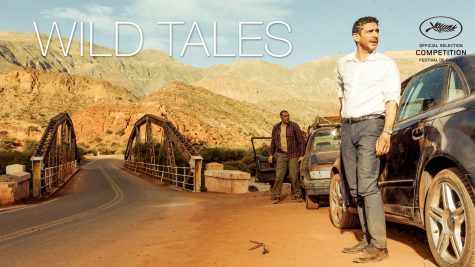
The film was a uniquely cinematic and creative endeavor as it consisted of several short skits with a completely new cast of characters each time. The film, like “Where Do We Go Now?”, uses drama and humor to illustrate a difficult time in a nation’s history, this case being Argentina.
The film speaks to the economic inequality and political tension that had gripped the nation in the latter half of the twentieth century.
Prof. Marc Palmieri noted that this was an easy choice for the festival. “This one stood out. It was designed differently. You don’t see mainstream commercial films structured this way, this was one of the first we all committed to. The others were debated but everyone had a terrific reaction to this one.”
The skits all had one corresponding trait in that they dealt with everyday people reaching their respective breaking points with society and taking things too far, such as an individual taking out his frustrations for several parking tickets with a car bomb, or a waitress debating whether to poison the food of a rich mobster running for office that had wronged her family.
The film’s post discussion seemed to believe that the actions of people in the film were indicative of Argentina, but for Dr. Celia Reissig-Vasile, an Argentinian native and fellow a guest speaker didn’t see it as a commentary on Argentina, rather humanity as a whole.
“There have been many disappointments; in many ways, it is a social critique of Argentina. But in many ways, as the director indicated, we are talking about a universal phenomenon,” Reissig-Vasile says.
Other members of the crowd concurred with Reissig-Vasile as they believed the frustrations of the characters in the skits were the same issues everyone faces in all nations, the United States included, the film was merely a creative and humorous take on the Argentinian experience.
“The film speaks about the universality of economic repression, all audiences to lesser degrees can relate to it,” says Reissig-Vasile.
The unique style of the film also intrigued the viewers. The film is a psychological roller coaster that puts its viewers in the seats of the characters. They see them suffering from what everyone does and they slowly lose control.
“You think that you’ve seen all you need to see then it goes to another gear. The shots they chose, they move the camera in slowly, and we see he’s having an important thought and it is conscious on their part,” says Palmieri.
Palmieri believes that the filmmakers exceeded at making sure the crowd was in the right mental frame of mind when they showed characters pushing the limits. “That’s what is so satisfying. That moment of pause and of indecision. To the audience, it’s cathartic, that in order to survive, we need to accept certain abuses. These characters react, pause to think about it, realize they haven’t gone far enough and continue to react.”
In many skits, the characters rebel against a system grossly more powerful than they. “This film addresses the trauma, what do you do when a system is so corrupt or economically unjust, people come to a point when they explode,” says Reissig-Vasile.
But the film makes it difficult for audiences to really grasp the idea of who is right and who is wrong due to no individual being innocent. “In all of them there is an idea of moral ambiguity, what is wrong and what is right when the rules of the game change so drastically,” says Reissig-Vasile.
For Palmieri, the film excelled at balancing that chaos and order. The film’s opening included wild animals in their natural environments, a subversive allegory alluding to the wild nature of humanity in the film. “It’s a powerful way to open the film. These animals are not living in a construct to where they have to think about how to react to their experience, instinct rules. In our society instinct must always be re-considered, pondered, rejected, and this is a film in where that instinct is allowed free reign. It’s in the title.”
Night three opened to a considerably darker tone with the 2015 Danish post-World War II drama, “Land of Mine”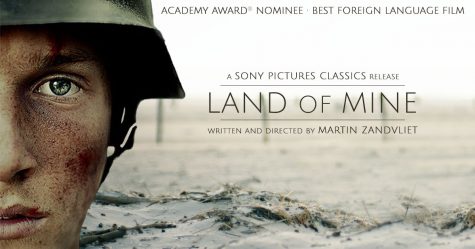
Unlike the first two films of the festival, there was no humor to be seen here.
The film descends into both the best and worst of humanity in its premise that sees a war-torn Danish Sergeant, Carl Rasmussen, overseeing a small group of German POWs as they clear over 40,000 mines from a Danish beach.
The film juggles with an immensely challenging moral dilemma, balancing humanity and hatred. The post-war setting features a war-torn Danish nation, one that held extreme hatred for the German people for the crimes committed. Rasmussen himself opens the film by ferociously beating a German prisoner for holding a torn Danish flag.
The film balances the ambiguity that came with placing young German soldiers in a position that western civilization doesn’t often see, the violence that was inflicted upon them (an uncomfortable amount of violence that subsided as the film progressed), and the decision to embrace humanity in Rasmussen.
For guest speaker and Mercy Professor Steven DeRosa, the frequency of the violence inflicted upon the boys in the films opening served to strengthen the bond between them and Rasmussen, “You saw more gore with the first victim (Wilhelm) with his arms blown off and he screams, with the first twin (Werner), you don’t see anything but it stuck with you because of the visual reminder of his twin (Ernst).”
As the film progressed and Rasmussen’s bond with the boys strengthened, the violence wasn’t necessary any longer, “He (director Martin Pieter Zandvliet) didn’t need to show it again, he showed more restraint, it became more about the emotional story and how Rasmussen comes to set aside his anger and need for revenge to show compassion for these boys,” said DeRosa.
The film, aside from finding our compassion through our anger, is also a commentary on the dangers that come with hatred, the chance that we become a monster in our quest to defeat one. The ruthless and unforgiving Danish and British characters treatment of the German boys is indicative of a mindset that spreads like a virus, such as Rasmussen’s wife’s unfettered glee after the boys accidentally poison themselves with tainted food, “In that one moment, when she laughs, when they all became sick from the rat poison, it was that it was the country as a whole, even someone who wasn’t a soldier, just a farmer, that she was able to play some part in the punishment,” said DeRosa.
The ability for Rasmussen to find humanity through hatred spoke to the theme of this years film festival for DeRosa, “He begins to resemble the Nazi figure, it pushed him to the limit, but Carl had some humanity, he was able to stop himself. The film spoke to the theme of the festival as it was just one man who said this was wrong, that is a defining moment, and that’s what separates us from them, at some point someone has to stand up and question their morality and what they were doing and in this case that is what he did.”
The festival closed out on a more uplifting tone with the 2016 joint United Kingdom, Mongolia, and United States produced documentary film “The Eagle Huntress”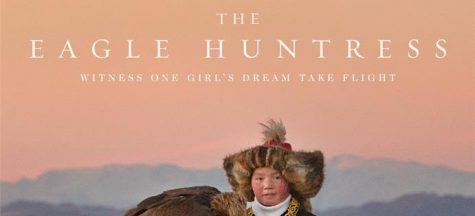
The film revolves around 13-year-old Aishol-pan, who is determined to become the first female in twelve generations in her tribe to become an Eagle Huntress.
According to guest speaker and Mercy Professor Louis Grasso, “The Eagle Huntress” plays into the theme of the film festival brilliantly, “The documentary plays off the theme of time, the eagle huntress was about an old world tradition being practiced in modern day Mongolia.”
“The Eagle Huntress” is a documentary-style film that isn’t common in the United States, “The documentaries we see in America are expository, people telling you what to think, we showed an Ethnographic style documentary, a study of a culture,” said Grasso.
A common misconception is that she sought to become the first ever female Eagle Huntress, but this is not the case, “She was not the first eagle huntress, she was the first eagle huntress of that tribe,” said Grasso
However, standing in her way was not only a vast and unforgiving wilderness but a community of older and much more experienced male Eagle Hunters directly opposed to not only the idea of a woman Eagle Hunter but the idea that a female was even capable of becoming one.
One constant source of stability was Aishol-pan’s father, who never left his daughter’s side, “what I like about the movie is the father went to great lengths to support his daughter and her wishes,” said Grasso.
The film was a remarkable achievement in cinematography as a three-camera approach made it possible to capture the pageantry, beauty, ferocity, and stillness of the Mongolian plains.
Drone footage captured the powdered white ridges and mountain tops, the wind blowing wave-like ripples in a frozen sea. They captured majestic and powerful eagles swooping and gliding with ease through the air, sailing through the wind down upon their prey.
A ground camera captured the equally powerful and determined Kazakh tribespeople living their nomadic lifestyle. They captured their journeys atop their Mongolian horses as they skimmed the ridges of mountains, the snow flailing around from the ground as if the mountains were speaking, as they searched for food and their next avian wingman.
A Go-Pro mounted on Aishol-pan and her father helped capture the life-threatening daredevil lengths they go to routinely not only bring food home to eat, but to capture and train their own Eagle.
The Go-Pro offers a unique new perspective, as it introduces a less edited, raw look into a reality that isn’t always visible without it, “You have constantly reminded the audience at home that what your watching is being filmed through a camera, and an editor, and it becomes a different style,” said Grasso on how traditional documentaries become entirely new styles with the mounted camera.
The immense visuals and scope of the region was a primary factor in the year-long shoot for “The Eagle Huntress”
The film is accompanied by a soundtrack that demands the audience’s attention, it swiftly carries them from there seat into the frozen capped mountains of Mongolia, “The track sounded like tympany style drums, strings, and horns helping us conjure images and feeling of space, time, and depth. When riding there riding along the tundra, the music makes you feel like your riding on the next horse,” said Grasso.
The music, like the visuals, was a way of transporting the audience, making them become a member of the very community that is being portrayed, “The music is allowing you to open your mind, relax, pace yourself, so that you could be receptive of all the little nuances of what’s going on with Aishol-pan, the father, the eagle, and the elderly tribe members.” said Grasso.
The films more cinematic style led to a post-viewing discussion that seemed obsessed with the validity of what they had seen. Much of the post-film debate focused on how much creative liberty the filmmakers took and to what extent events in the films were staged, even to some degree of whether or not Aishol-pan had achieved what she did in the film.
“Nowhere does it say you can’t reenact or restage a documentary, The first documentary film “Nanook of the North” was entirely re-staged, a reenactment is a viable form of filming documentaries said Grasso.
A reasoning for this is that documentaries are usually portrayed as factual accounts, “they know in their own mindset that documentary means truth, so anything that looks set up, contrived, or staged, they question,” said Grasso.
A particular irony was pointed out amongst some that the same doubt the elderly Eagle Hunters in the film demonstrated had become evident in themselves to a degree as they had sat and debated whether Aishol-pan, the female, had actually been able to accomplish what she did.
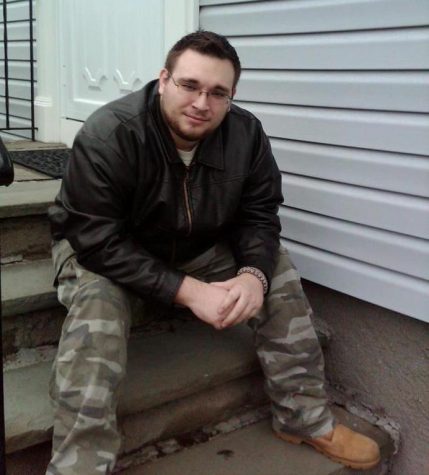
Michael Dunnings, otherwise known by the Hungarian equivalent "Miska", is a native of Dobbs Ferry and a senior studying Journalism at Mercy College. Michael...



